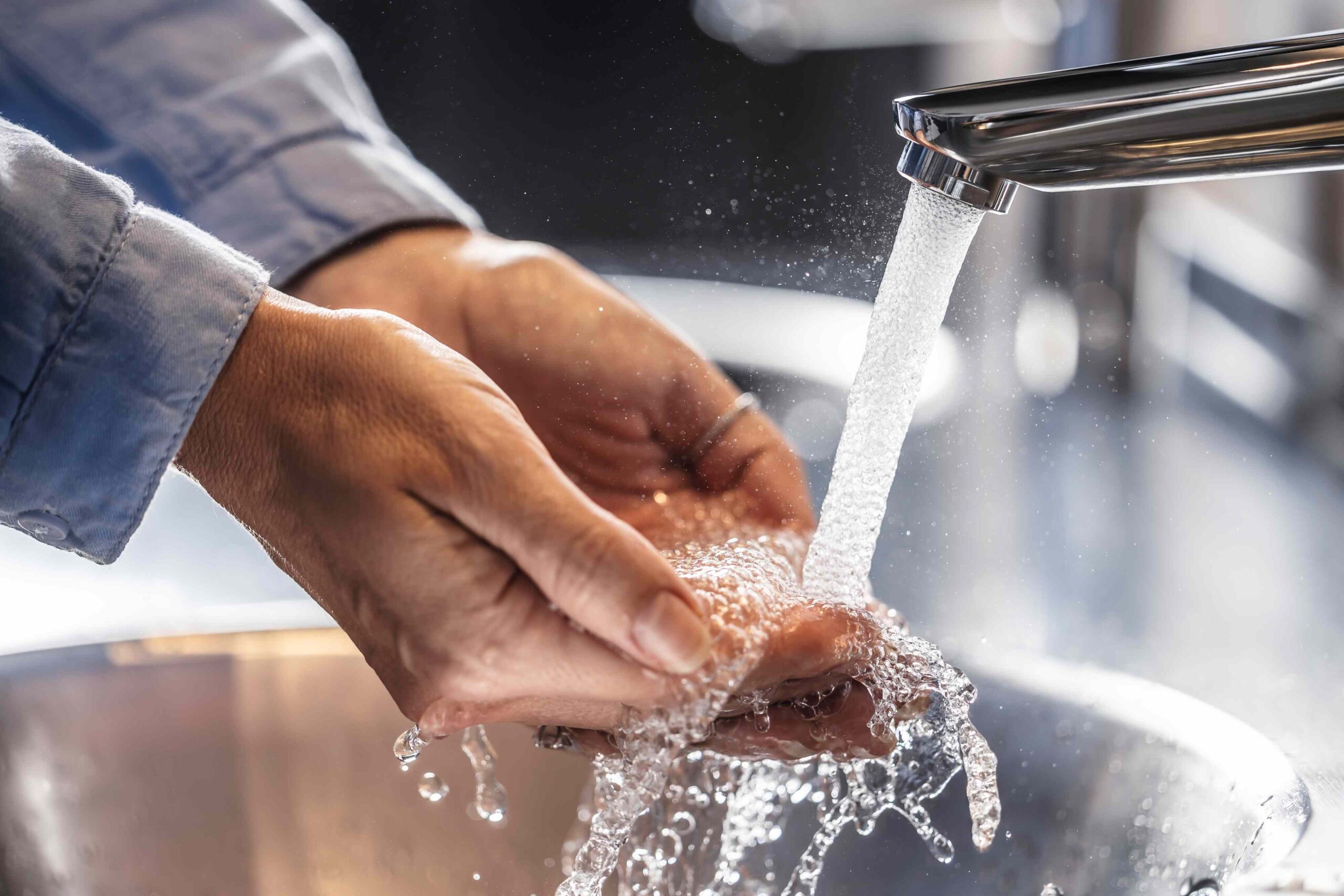Key Takeaways Salmonella can be spread from person to person through the fecal-oral route. You can also get it by consuming contaminated food or water, or by touching a contaminated surface and then your mouth. Washing your hands can prevent the spread of infection. Salmonella is a highly contagious bacterium that can be spread from person to person, mainly by the fecal-oral route. You can catch it from an infected Individual or animal, by consuming contaminated food or water, or by touching a contaminated surface and then your mouth. How Contagious Is Salmonella? Salmonella is an enteric bacterium, meaning one that resides in the digestive tract. Salmonella is extremely contagious. Studies have shown that as few as 10 bacteria per milliliter of fluid can lead to an infection. The infection itself is referred to as salmonellosis. Salmonella is among the most significant causes of foodborne illness worldwide. In the United States, an estimated 1. 35 million infections occur each year, resulting in around 26, 500 hospitalizations and 420 deaths. Salmonella is mainly passed through the fecal-oral route. This typically occurs when you ingest tiny amounts of feces (stool), most commonly through food contaminated with it. The infection can be passed from person to person and even from infected animals to humans. How Do You Catch Salmonella? Salmonella is commonly transmitted (passed) through the following routes: Contaminated food: This includes eating raw or undercooked meat, poultry, or seafood that has been contaminated during processing. The same can occur when eating fruits or vegetables washed with contaminated water, or consuming eggs or dairy products from infected animals. Person-to-person contact: This can occur when coming into contact with feces or vomit from an infected person. It can also be passed through anal-oral sex (“rimming”). Less commonly, Salmonella can be transmitted through saliva during kissing. Contaminated surfaces: You can get Salmonella by touching surfaces contaminated with feces and then touching your mouth. These include surfaces in bathrooms and kitchens, and frequently handled objects like cell phones, toys, and doorknobs. Contaminated water: You also get infected by drinking or swimming in contaminated rivers, lakes, or wells, particularly those located near animal farms. Animal contact: This can happen when handling infected pets or livestock (especially chickens) or when cleaning pet cages, animal pens, or litter boxes. There are over 2, 500 serotypes (types) of Salmonella, but fewer than 100 are responsible for the vast majority of infections. Salmonella enteritidis and Salmonella typhimurium are the two most common serotypes in the United States, accounting for half of all infections. Who Is at Higher Risk of Infection? Anyone can get Salmonella, but certain factors can increase the risk, including: Children under age 5 Adults 50 and older with underlying medical conditions Adults 65 an older Anyone with a weakened immune system People traveling outside the United States How Long Are You Contagious? Salmonella is most contagious when an infected person has diarrhea or vomiting. Even after symptoms have cleared, Salmonella can persist in stool for several weeks or months, meaning that transmission is still possible. Salmonella can also be passed by someone with no symptoms. Studies suggest that as many as one in three infections are asymptomatic, highlighting the need for good hygiene in households where salmonellosis is known or suspected. What Are the Symptoms of Salmonella? Salmonellosis is characterized by diarrhea. Symptoms usually start 6 hours to 6 days after infection and usually last for 4 to 7 days. Common symptoms of salmonellosis include: Watery diarrhea, sometimes explosive Stomach cramps, often severe Mucus or blood in stool Other possible symptoms include: Headache Loss of appetite Nausea Vomiting When to See a Healthcare Provider Seek medical care if you or a loved one experiences: Diarrhea or vomiting lasting more than two days Bloody stool or urine A fever higher than 102 F Signs of dehydration, including lightheadedness, extreme thirst, crying without tears, or having little or no pee How to Prevent Salmonella Poisoning To avoid getting or spreading Salmonella, it is important to: Wash your hands thoroughly after going to the bathroom, after touching or caring for animals, changing diapers, and before and after handling food. Keep food surfaces clean and disinfected. Cook food to the proper temperature. Avoid raw milk, opting for pasteurized milk instead. Store perishable food at 40 F or below in the refrigerator, or 0 F or below in the freezer. Check for official water quality reports before swimming in lakes, rivers, or streams. Avoid drinking untreated water. Use a barrier during anal-oral sex. By James Myhre & Dennis Sifris, MD Dr. Sifris is an HIV specialist and Medical Director of LifeSense Disease Management. Myhre is a journalist and HIV educator.
https://www.verywellhealth.com/is-salmonella-contagious-11845569
Can You Catch Salmonella From Someone Else? What Science Says


